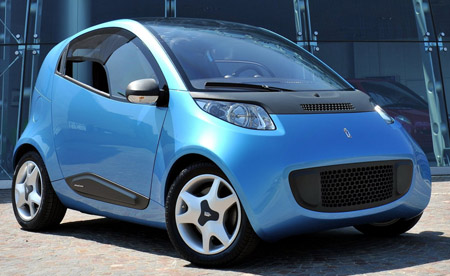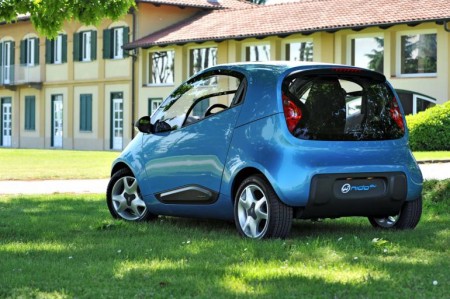
Possibly tired of drawing up Ferraris, Pininfarina tries their hand at the whole eco car thing and have released this electric car concept called Nido EV. A development of the similarly named 2004 concept, the Nido EV, which is slightly bigger than a Smart fortwo, is designed both to explore the electrification of a small city car and a modular floorpan.
The body structure of this first running prototype is a tubular steel frame, while the final version will have an aluminium space frame. The structure was designed to adapt to four different configurations: 2-seater, 2+2, pickup and light van. They can be completely electric or hybrid. Doesn’t it sound like a certain concept from a rival Italian design house that captured Proton’s attention?

The Nido EV is powered by a 30 kW electric motor housed in the rear of its 900 kg shell. With 125 Nm of instantaneous torque, the 100 km/h mark is reached in only 6.7 seconds, faster than a Golf GTI. Top speed is electronically limited to 120 km/h. Instead of the common NiMh or Li-ion batteries, the Nido is powered by salt batteries. The Zebra Z5 Ni-NaCl battery is said to guarantee high levels of safety and reliability and a full charge delivers 140 km of emissions free driving. The battery is 100% recyclable at the end of its life.
Also, as if already expecting plenty of questions about the Nido’s unfinished interior, Pininfarina explains that the cabin is still at the “technical prototype” stage, with no attempt at stylistic research. Gallery after the jump.
[zenphotopress number=999 album=1152]
Looking to sell your car? Sell it with Carro.





AI-generated Summary ✨
Comments express interest and admiration for the Nido EV's design, noting it as stylish and innovative, potentially surpassing Proton's EMAS in aesthetics. Some see the EV as practical for daily use due to its efficiency, quick battery swapping, and environmental benefits. Concerns are raised about infrastructure and the practicality of electric and hybrid vehicles, emphasizing the need for charging stations and realistic range. There is skepticism about Proton’s EMAS being truly market-ready, with fears it may be just concept showmanship without infrastructure plans. Several commenters compare the Nido EV favorably to Proton's EMAS, highlighting its sleek design, better interior, and performance specs. Overall, sentiments are a mix of enthusiasm for electric vehicles and cautious optimism about their feasibility and future in Malaysia.